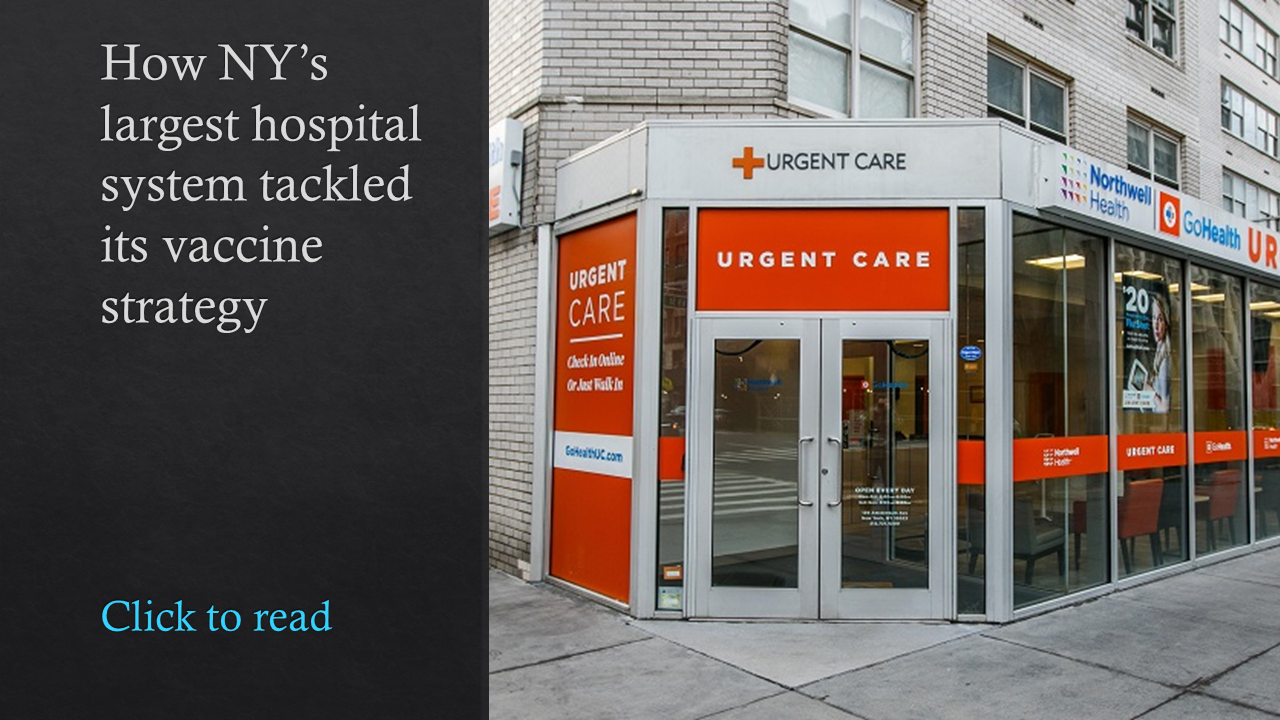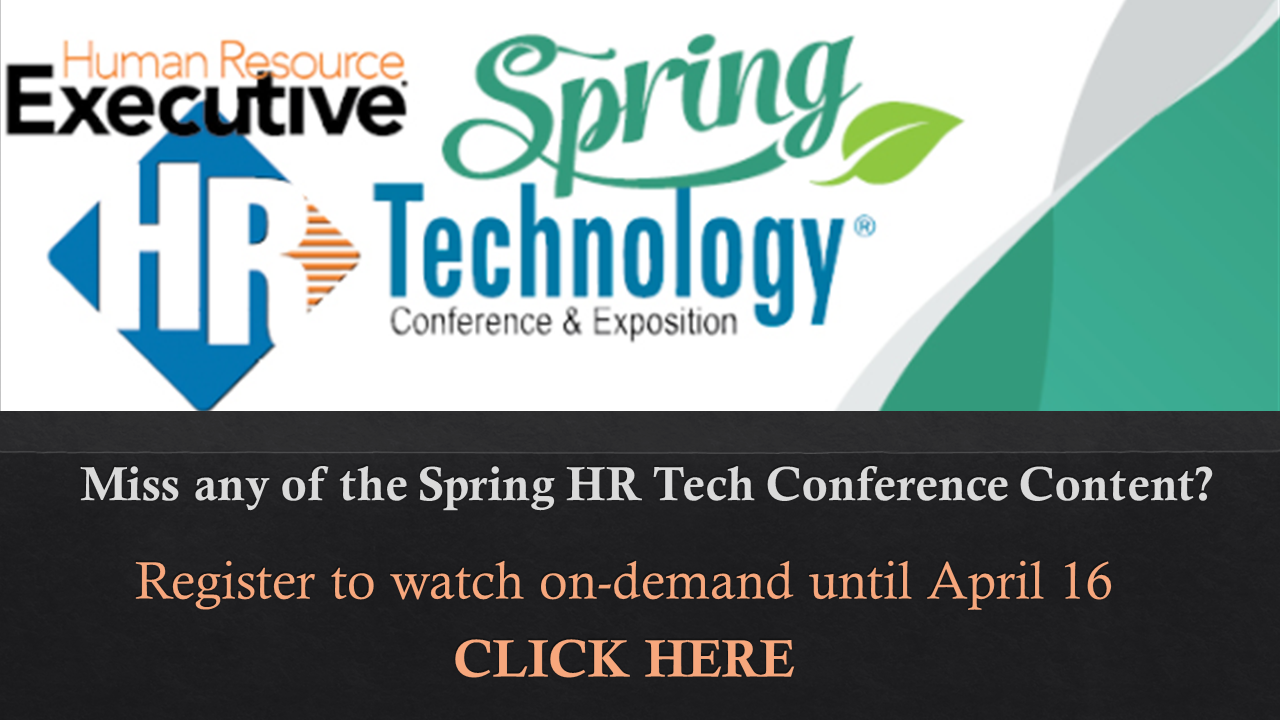It’s undoubtedly been one of the hardest years in history for organizations, and for HR leaders tasked with guiding companies and employees during the pandemic that has impacted nearly every facet of the workplace. But it’s also been one of most transformative years in history.

While COVID-19 has tested and challenged organizations in unimaginable ways, it’s also given leaders an opportunity to change old ways of thinking and to innovate, said industry experts, HR executives and analysts during HRE’s Spring HR Technology Conference & Exposition, held virtually March 16-19. “As with previous crises, we now see the opportunity for businesses to demonstrate resilience by transforming and even thriving through revitalization and innovation,” said Mimi Brooks, CEO of Logical Design Solutions. “Those businesses that are adaptable and collaborative will be most capable of dealing with the challenges that face us all in a post-pandemic era.”
Aside from COVID-19, other popular topics during the four-day event included diversity and inclusion, talent acquisition tools, tech to allow remote work and more.
Here are some of the biggest takeaways from the event.
It’s all about human and employee connection. After one year of a grueling pandemic, racial unrest, financial insecurities, mental anguish and more, employers and HR leaders must think about their biggest asset: their workers.
 “We have to understand our people and what they have gone through in the last year. If we skip over them, they’ll skip over us,” said industry analyst and Jason Averbook. That point was reiterated by Maxine Carrington, deputy CHRO at Northwell Health, New York state’s largest healthcare provider and private employer, who said the health, safety and wellbeing of the company’s employees are paramount.
“We have to understand our people and what they have gone through in the last year. If we skip over them, they’ll skip over us,” said industry analyst and Jason Averbook. That point was reiterated by Maxine Carrington, deputy CHRO at Northwell Health, New York state’s largest healthcare provider and private employer, who said the health, safety and wellbeing of the company’s employees are paramount.
“Are we being responsive to our team members’ needs?” she said. “If we don’t get that right, especially with new generations coming in, it doesn’t set us up [for the future].”
In another session, Rob Arbogast, director of people systems and strategy at the Timken Co., an Ohio-based global manufacturer that employs more than 17,000 people, said that at the beginning of the pandemic, his company deployed a Qualtrics survey tool and found that its employees didn’t feel supported. Using the data as a foundation, Timken turned to SAP SuccessFactors, whom it has been a client of since 2013, to create a range of new programs around building “engaged leaders.”
Managers were all given leader goals, and the company launched a formal engaged leader guide that includes eight practices to enhance leadership. Arbogast said the recommendations aren’t complex: Connect with your associates daily. Discuss clear metrics and goals on a weekly basis. Execute a communication plan. Make sure you’re having team meetings. “We’re really engaging our people, the workforce, our managers like we’ve never done before,” Arbogast said. “And the end result is we have the opportunity to move our workforce to be more engaged, happier and more focused. That’s what it’s all about.”
Read all of HRE’s Spring HR Tech coverage here.
Remote work will continue–and tech needs to help enable it. COVID-19 prompted a mass shift in remote work–and for the most part, proved that it worked well–and that’s not going to change post-pandemic. Now that remote and hybrid-remote arrangements will continue for many organizations, employers need to invest in the right digital tools to ensure their success. “The new workplace really is the digital workplace,” Melanie Lougee, head of employee workforce strategy at ServiceNow, said during the event, meaning it needs a “digital backbone.” Collaborative team tools that allow for easy connection, like Microsoft Teams, are key, as are productivity tools for organizational alignment and mobility and even home office stipends.
[click_to_tweet tweet=”#COVID19, #diversityandinclusion and new #tech to ensure the success of #remotework were among the themes of the virtual, four-day Spring #HRTechConf event” quote=”#HRTechConf” theme=”style3″]
Companies also should invest in intelligent and personalized digital employee headquarters to give employees a shared sense of belonging when they aren’t in an in-person setting, Lougee said.
Logical Design Solutions’ Brooks said that with more hybrid-virtual workplaces in the future, HR should help ensure connection by scheduling regular virtual events, regularly communicating with employees and allowing workers to have a voice in hybrid virtual policies. “HR can become an active driver of progressive remote working experiences,” she said.

COVID-19 has made HR executives rethink leadership strategies and get more involved. There’s no question the past year has been extremely challenging for company leaders tasked with keeping employees healthy while also keeping operations afloat. But the pandemic has also given leaders a chance to learn and change their ways of thinking.
Jessica Lee, Marriott’s vice president of global performance and talent advisory, for instance, self-admittedly wasn’t always experiencing the same pain points the company’s workers were, and she wasn’t deep in the trenches of their tasks. But when Marriott’s hotels put in place an abundance of health and safety measures, including mask mandates, it opened up a whole new set of challenges for workers. It made things difficult for employees who were used to engaging with guests by smiling, or who had to approach customers to tell them they had to wear their mask.
Lee talked with employees about this challenge, as did company leaders, who had many Zoom meetings to talk about how they could still engage with customers while wearing masks–and how to approach customers who didn’t want to wear a mask, a much trickier situation. Lee said that experience reminded her to “stay close to the action in order to motivate and support those who are doing it themselves or make better decisions.”
Talent and hiring tech is evolving. The last year was tough on the once-hot job market. But with the rollout of the COVID-19 vaccines and a nearly $2 trillion stimulus initiative underway, analysts including Josh Bersin predict a boom in the labor market–which also means employers are examining their talent strategies. “I have no question in my mind that this will be perhaps the most exciting, growing economy you have ever been a part of,” Bersin said during the Spring HR Tech opening keynote. As a result, a new set of talent applications is emerging. And expect more companies to leverage internal talent marketplace tools where employees can search for opportunities, be matched with jobs and projects based on skills, and apply within the platform, he said.

Other analysis points to a surge in programmatic job advertising, which essentially is the use of technology instead of people for buying, placing and optimizing job ads. New data out from Aptitude Research, which surveyed 426 TA and HR directors, finds that 90% of companies that use programmatic are either continuing to invest the same or increasing their investment this year, Madeline Laurano, an analyst at Aptitude Research, explained during a session. And the majority (57%) of companies are increasing programmatic investment this year. “Companies are turning to programmatic in a big way this year to be able to streamline all of their advertising to reduce spend and think about a performance-driven platform to be able to do all of the advertising,” she said.
Organizations need to think differently–and get more serious–about diversity. Employers have fallen wildly short on diversity and inclusion efforts over the years–and even after a year of racial unrest that’s opened up conversations, HR leaders still need to do much better, Spring HR Tech speakers said.
“You put up a press release thinking that was going to solve all the problems of black and brown people, people with disabilities, LGBTQIA, gender preferences. You’ve done things that have only placated progress. You’ve been complicit,” said Torin Ellis, author and expert on diversity, equity, inclusion and belonging strategy and risk mitigation.
Ellis challenged HR to approach DEI differently, noting that for too long, workplaces have championed complacency. “We put chief diversity officers in place with no resources or power,” Ellis said. “We put program leads in place, poorly prepared for the pursuit of doing what it takes to bring about DEI inside our organizations.” To help HR leaders get DEI efforts moving in the right direction, Ellis suggests HR leaders leverage analytics and look at their DEI data over the years and see if they’re including different people in their organizations. But leaders also need to do much more than just embrace tech, he insisted, adding that having tough conversations in your organization is paramount.

Meanwhile, said keynoter Jackye Clayton, organizations need to be rethinking their recruiting and hiring approach. To truly recruit and retain a diverse workforce, employers shouldn’t be hiring for culture fit, Clayton said, but rather need to reimagine their company culture to allow diversity room to grow. “You may have to shatter the ways you’re used to doing things to get better at diversity recruiting,” Clayton said. She outlined common mistakes employers should avoid when it comes to diversity hiring–including not looking beyond historically Black colleges and universities for diverse talent, pigeonholing diverse hires into entry-level jobs and not targeting potential employees with disabilities.
Employers need to make strides on employee feedback and engagement. A largely apparent fact that has been made abundantly more clear by the pandemic is that employees are oftentimes the best source of information about a company. They know about an organization’s customers, its operations and its safety procedures, and they know what’s working and what isn’t. Yet the majority of companies, at most, conduct annual employee surveys with big-picture, pie-in-the-sky, theoretical questions that don’t get at the heart of the organization or how employees are feeling.
 To truly gauge feedback and get at what’s working and what’s not, organizations should embrace continuous listening and understanding, a strategy that gathers feedback often and across the employee lifecycle. The process also can address and zero in on some of the topics that are top of mind for organizations, without waiting until a certain time once a year.
To truly gauge feedback and get at what’s working and what’s not, organizations should embrace continuous listening and understanding, a strategy that gathers feedback often and across the employee lifecycle. The process also can address and zero in on some of the topics that are top of mind for organizations, without waiting until a certain time once a year.
“To me, the whole concept of continuous listening is really about HR becoming more agile,” said Lydia Wu, head of talent analytics at Panasonic North America. “It’s really about HR meeting employees where they are and ultimately shifting the perception of HR as a function through being able to better service our employees at the end of the day.”
Katy Tynan, principal analyst of Forrester, noted in her keynote address that only 12% of employees who quit their company say they leave for more money, according to exit interview research done by HR Advisor Survey. The real reason is a lack of engagement, meaning employees aren’t getting the feedback, development opportunities, recognition, trust and rest that they need.
“It’s not about being nice to frontline managers,” Tynan said. “It’s about creating an environment where you have sustainable employee engagement because you’re investing appropriately in the people who are closest to that engagement.”
Wellbeing is vital–but it’s not all about the tech. Especially after COVID-19 took a hard hit on employees’ physical and mental health, one thing is incredibly apparent: Wellbeing is no longer a benefit, it’s a business need, Bersin said. And that means that wellbeing needs to be integrated into leadership and management models. While tech vendors are churning out new wellbeing products, they need to be thoughtfully incorporated into a wider strategy, Bersin noted.

“You don’t need all of [the wellness tools on the market]. You may have too many,” he said. “The strategy is to build a wellbeing approach: Teach people in the company about flexibility, forgiveness, time management, taking breaks, taking vacations, shutting down the company on the weekends, doing social responsibility. Those are the things that create a sense of wellbeing at work.”
Averbook said organizations need to develop a “whole-person” approach to employees and think about their physical, emotional, social, spiritual and intellectual wellbeing and purpose in an organization.
“If we don’t focus on the whole person, they disconnect,” Averbook said. “They abandon, and when they abandon, we lose them.”

